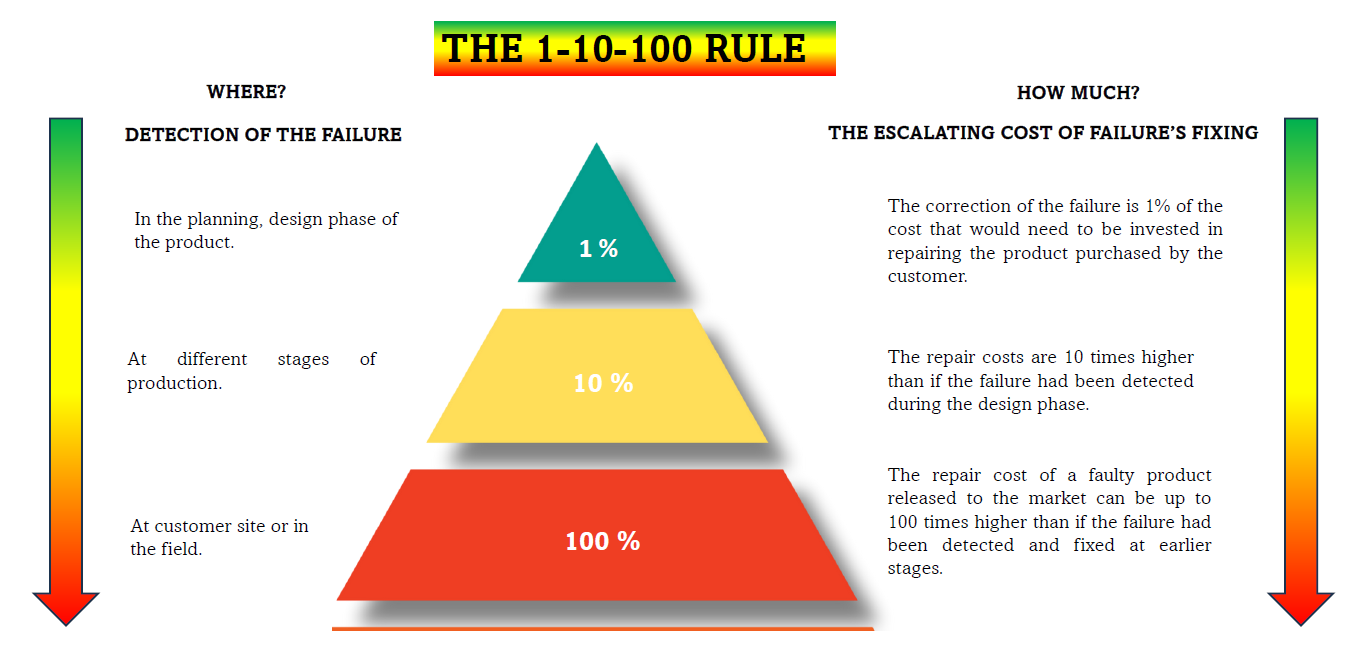The 1-10-100 rule explains what it costs if we let small problems grow into big challenges
The 1-10-100 rule is a principle used in quality management that illustrates the escalating costs of fixing defects at different stages of a process. The rule emphasizes that the earlier a problem is detected, the less costly it is to fix.

Here’s what each number represents:
In the context of the 1-10-100 rule, the numbers typically represent percentages rather than monetary values.
- 1% – The correction of the failure is 1% of the cost that would need to be invested in repairing the product purchased by the customer. The cost to fix a defect if it is identified during the design or planning phase. This is when it is easiest and cheapest to address potential problems, as the impact on resources and the process is minimal.
- 10% – The repair costs are 10 times higher than if the failure had been detected during the design phase. The cost to fix a defect if it is identified during the production phase. By this time, some work has been done, and addressing the issue may involve rework, which increases the cost.
- 100% – The repair cost of a faulty product released to the market can be up to 100 times higher than if the failure had been detected and fixed at earlier stages. The cost to fix a defect if it is identified after the product or service has been delivered to the customer. At this point, fixing the defect can be highly expensive, as it might involve redoing the work, dealing with customer complaints, potential returns, legal consequences, or brand reputation damage.
This rule serves as a reminder of the importance of identifying and addressing problems early to reduce overall costs.
The 1-10-100 rule is part of Philip Crosby’s bigger idea about how costly poor quality can be. He used the rule to show that fixing problems later in the process, or after the product is already delivered, costs way more than catching them early on. It’s all about how it’s cheaper to prevent issues than to deal with them later.





